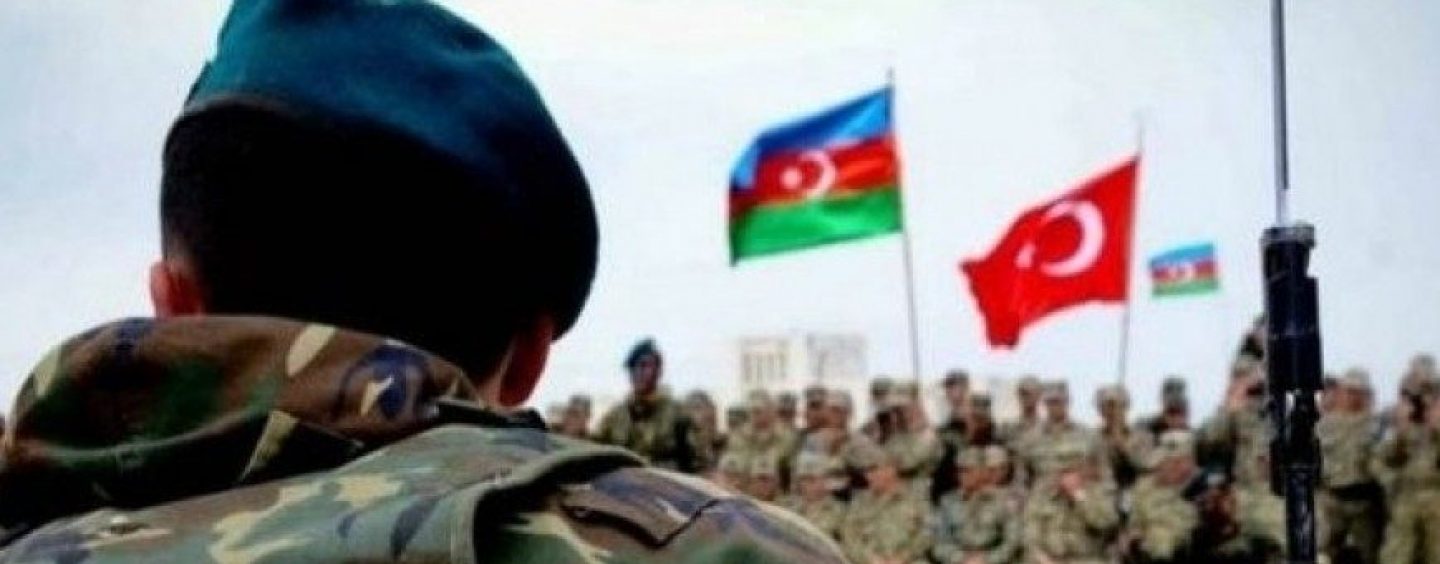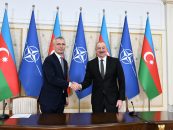By Hikmet Aydinoghlu
To all youngsters, who paid for liberation of Azerbaijan with their lives, and my cousin’s son Vusal Ismailzadeh (19 years old for ever) among them [http://az.baku-art.com/az/men-ona-vet-n-oglu-deyirdim-sh-hid-vusal-ismayilzad]
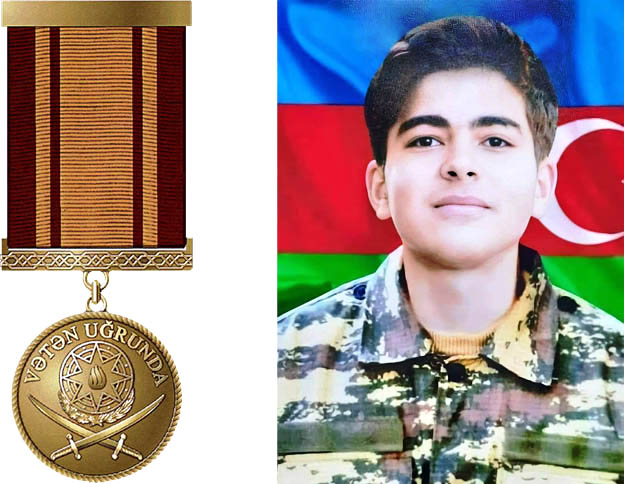
Last year Azerbaijan had responded to the challenge of the time – its territories, occupied by Armenia at the USSR collapse, were taken back by the force. The war lasted 44 days. Every day of that Patriotic war our glorious army under the leadership of the Supreme Commander-in-Chief of the Armed Forces of the Republic of Azerbaijan, President Ilham Aliyev won another portions of our lands, performed unique examples of military art and courage, never stepped back leaving the field, and thus eventually broke completely the enemy’s morale and resistance down.
Yet, that impressive victory was not an easy-come success. A lot of blood and maternal tears went poured on both fighting sides. Indeed, any war brings grief, and it is normal to try to come to a fair solution peacefully. However, the war, which broke out in the fall of 2020, should have been expected. How could it be otherwise if negotiations lasted for decades but did not bring our countries closer to the conflict resolution based on the international law? On the contrary, our peaceful approach only strengthened the invaders’ confidence in their impunity.
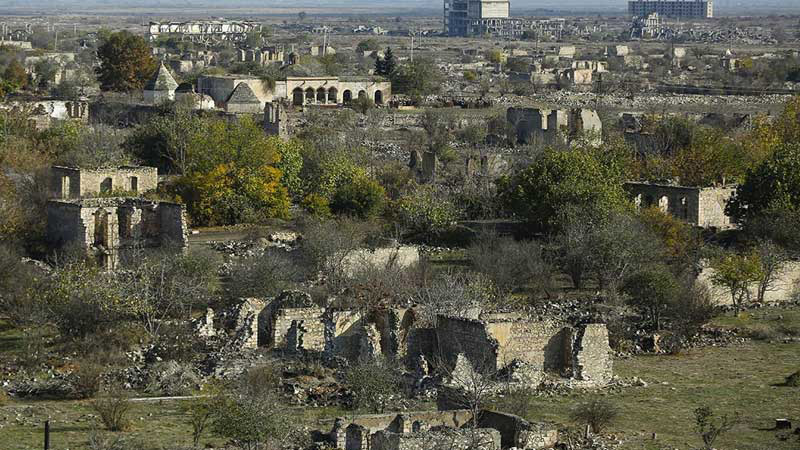
International organizations, responsible for the negotiation process and ceasefire maintenance, had shamefully failed with their mission. Many of our peaceful villagers, elders and babies, as well as young soldiers and honoured generals were killed by gunning or shelling from the Armenian side during nearly 30 years of the ceasefire. The invaders methodically robbed and ruined to dust Azerbaijani cities and villages, while inhabitants in the early 90s were either ruthlessly massacred [https://mod.gov.az/en/khodjali-genocide-411/], or driven into slavery or, in the most ‘humane’ case, expelled away. Armenian politicians were more and more caddish at negotiations on the conflict and the UN resolutions demanding withdrawal of the occupants from Azerbaijan.
Indifference, connivance, disregard, and often openly selfish attitude of the outside world to this ‘frozen’ conflict left us no choice. This deadlock became a challenge of the time. And Azerbaijan responded to this challenge – by 2020 it was no longer that vulnerable Azerbaijan, which could easily be snatched into pieces. Azerbaijan had raised a modern, well-armed and trained army, which wrote valiant pages to the history of our country last year.
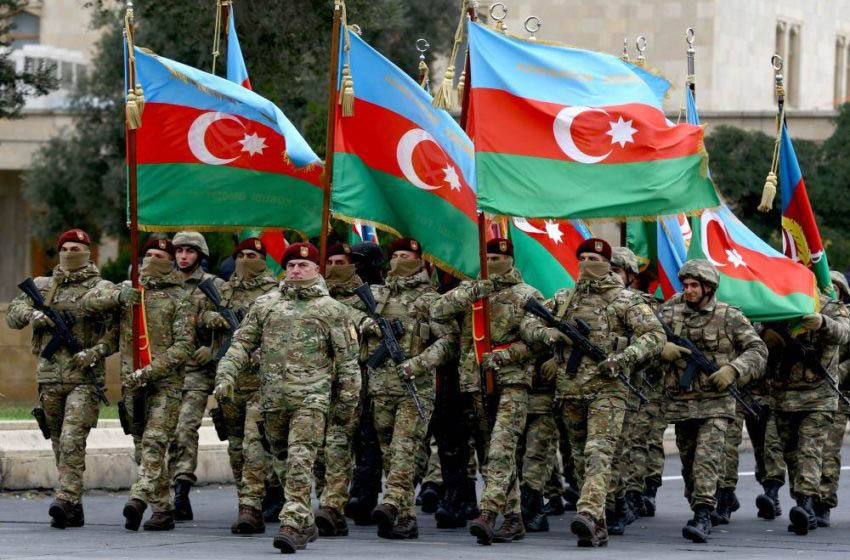
In connection with the last year’s victory, Azerbaijanis will never forget the international support of several friendly states. These states provided us comprehensive military experience exchange, tactical training and successful rearmament of the Azerbaijan armed forces, on the one hand, and worked for political deterring of the supportive to Armenia states from the open military intervention to the Second Karabakh war, on the other. Our brotherly Turkey and Pakistan are at the top of the list of our best friends.
On November 9, 2020, when inhabitants of the capital city of Baku enthusiastically poured out from their homes and walked all the day in the streets and squares, celebrating our glorious victory, enormous number of national flags were fluttering in their hands, on their cars, on the facades and balconies, lampposts and trees. Along with the state flag of Azerbaijan, numerous flags of Turkey and Pakistan, and also Israel and Russia increased multicolour and multinational view of the celebration.
History repeats itself. Probably, the same enthusiasm was overfilling Bakuvians, taking them into the city streets 103 years ago, when the Turkish-Azerbaijani units of the Caucasian Army of Islam forced the British expedition troops of ‘Dunsterforce’ to flee away, defeated the anti-Azerbaijani dictatorship government of ‘CentroCaspi’, crushed numerous gangs of Dashnak nationalists, and on September 15, 1918 entered Baku as liberators.
After the February Revolution of 1917, not a single pro-Russian government could gain a foothold in Azerbaijan due to political resistance of the Muslim parties led by Musavat. Aiming to suppress this opposition, all pro-Russian revolutionary and counter-revolutionary forces, competing and replacing each other in power, used to cooperate with the Dashnak Nazis, who were happy to terrorize the masses of patriotic locals and block the path to power for political parties aimed at the independence of Azerbaijan. Under each government, the Dashnaks managed also to become the government members and infringe the Azerbaijani population ‘legally’.
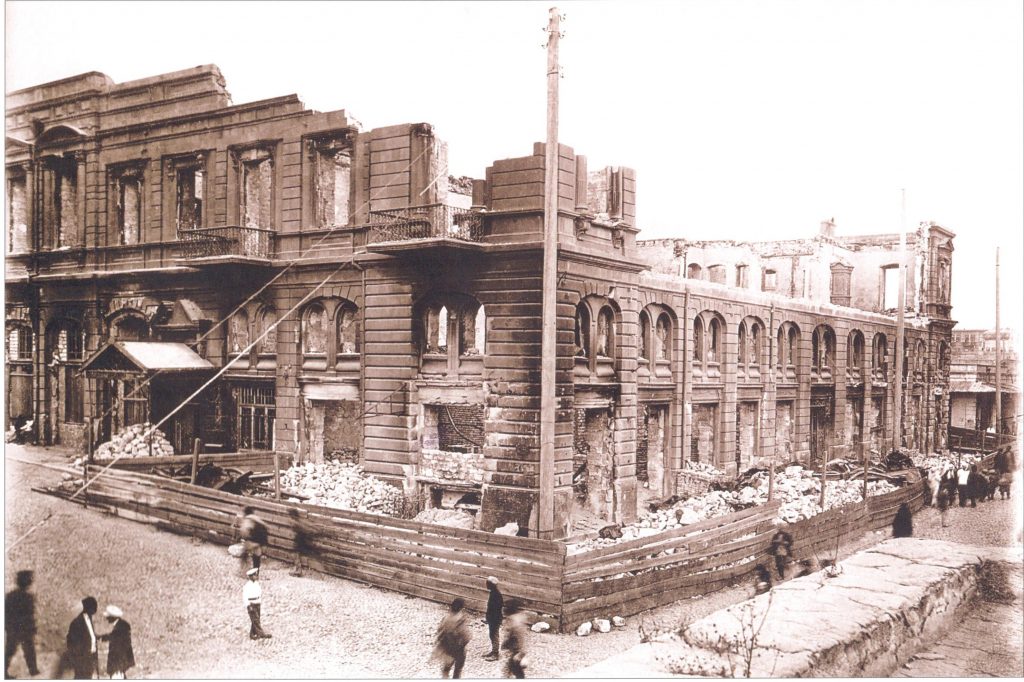
Clashes motivated by ethnic hostility regularly occurred in Baku since the summer of 1917. And since the tragic events of March 1918, the Azerbaijani quarters of Baku about six months were in a state similar to siege, as the Azerbaijanis found themselves rightless in their own land and feared to leave homes because of the threat to their lives. The militia, being intended to protect citizens, instead was a mortal threat, because its allies armed units of Dashnaks in that bloody March were given the massacre ‘license’ by their fellow tribesmen, who skilfully penetrated the Bolshevik leadership..
After the terrible March slaughters in Baku, it was no longer possible to control the Dashnaks. Their ruthless, sophisticated extermination raids against weaponless Moslem civilians in large and small settlements throughout Azerbaijan killed hundreds of thousands of innocents. Only arrival of the Caucasian Army of Islam, established by the Turkish armed forces, made it possible to save our Nation from extermination, and the country from disappearing. Fraternal Turkey had responded to this challenge of the time as below:
– On February 3, 1918, Turkish defence minister Enver Pasha ordered to establish a Centre for all necessary aid to the Caucasus and other regions of Russia, where the Muslim population lived oppressed. The minister’s brother lieutenant colonel Nuri Bey was appointed a head to this strategic special forces’ training centre. By the order dated March 2, the minister raised military ranks of all officers who were ready to take an honour to go to fight at the Caucasus. Nuri Bey got the rank of Lieutenant General and the title of Nuri Pasha.
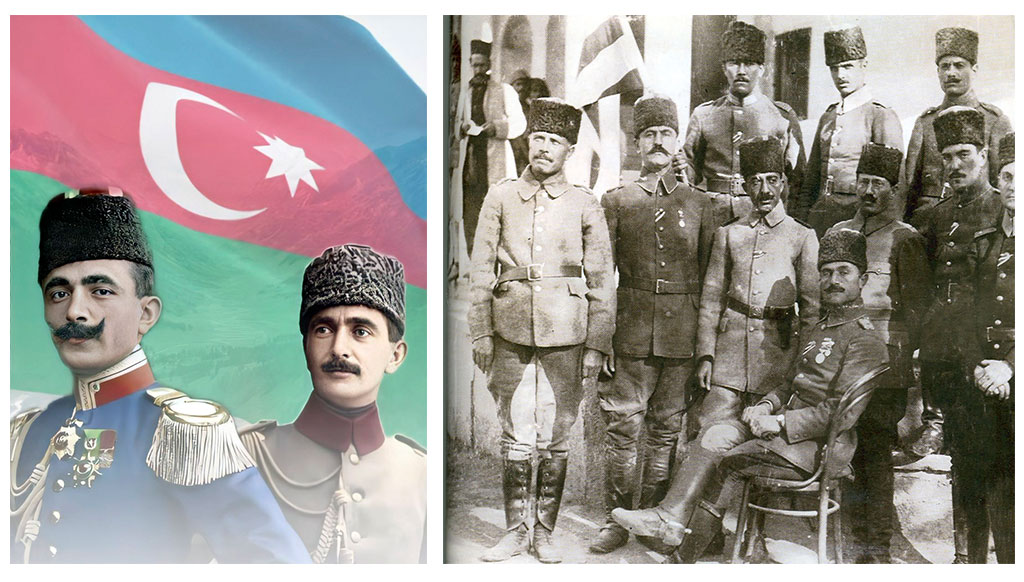
– On March 22, Enver Pasha approved the List of duties and objectives for the Caucasian Army of Islam (CAI), and also authorized Nuri Pasha to start with formation of the CAI. On March 25, Nuri Pasha with that high authority arrived to Mosul at location of the 6th Army. Here he selected 20 men from among the most experienced staff officers and field commanders. On April 8, Nuri Pasha with his small detachment left Mosul and, following through Tabriz, arrived to Zangezur.
– On April 20, Sultan Mehmet Rashad’s approval order concerning the CAI was announced. Nuri Pasha decided Ganja to be the starting point for the CAI activities. Preparations for the regular Turkish troops’ passage to Ganja entered the phase of practical arrangements.
– On May 25, Nuri Pasha with his limited detachment arrived to Ganja. The entry of the Turkish CAI commandment to the city took place with mass jubilation of the townspeople.
– On June 4, a Treaty of Amity and Cooperation was signed in Batumi to formalize the appeal of the ADR government to Ottoman Turkey for military support aiming to protect promptly the Muslim population from massacres.
Units of the 5th Caucasian Infantry Division including 257 officers and 5,575 soldiers headed to Ganja and became the first sufficient contingent of the CAI. More than 4 thousand Azerbaijanis joined the CAI in June. The CAI turned to be the nest for the first armed units of the young Azerbaijan Democratic Republic (ADR).
First, the CAI troops suppressed the resistance and disarmed the Dashnak gangs in Ganja. In reply, the Dashnak-Bolshevik military units moved to Ganja. The CAI threw them back and started to Baku, liberating cities and villages on its way. Some other regular Turkish units as well as numerous Azerbaijani recruits joined the CAI during next weeks and months.
– On September 8, regular units of the 15th Chanakkala division, consisting of 5,541 privates and 191 officers, arrived to the Baku front.
– On September 15, enemies were completely defeated and the CAI troops entered Baku.
– On September 16, a Victory Parade of the CAI took place.
– On September 17, Baku officially became the capital of the ADR.
The CAI’s glorious way to Baku was not a pleasure trip. Many brave soldiers sacrificed their lives in the battles for the independence of Azerbaijan. Eternal thanks to the CAI, salute and prayers for the fallen heroes!

Yes, the history repeats itself. In 2020, Turkey again stood next to us, together with us demanding from the occupying forces to leave from the lands of Azerbaijan. Continuing our traditional political cooperation and mutual assistance, tested in various difficult times, our fraternal countries demonstrate the highest level of strategic partnership. Thus, according to Western experts, Azerbaijan and Turkey continue to guard regional security. [https://news.day.az/politics/1378579.html]
After the victory of 2020, restoring of civilian infrastructure in the liberated territories has become a new political challenge of the time. During all the years of occupation, Armenia was engaged in destruction and plundering of the captured cities and villages, being sure that they will not stay at its disposal for long. Azerbaijan, in opposite, immediately began large-scale restoration works, because we have returned to our own lands, returned forever. [https://qaynarinfo.az/az/qaraba-teyyaresi-fuzuli-aeroportuna-ilk-sinaq-ucusu-etdi-foto/]
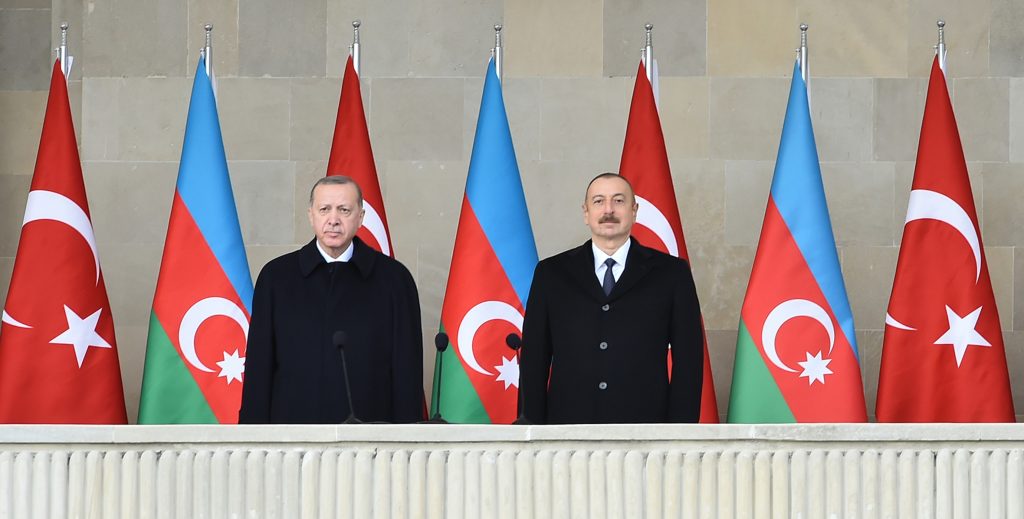
Azerbaijan has responded with all its human and economic resources to this new challenge of the time, tuned to building and reviving. Again, fraternal Turkey came standing by, taking an active part in these restoration works. Long live the eternal brotherhood of our peoples!

